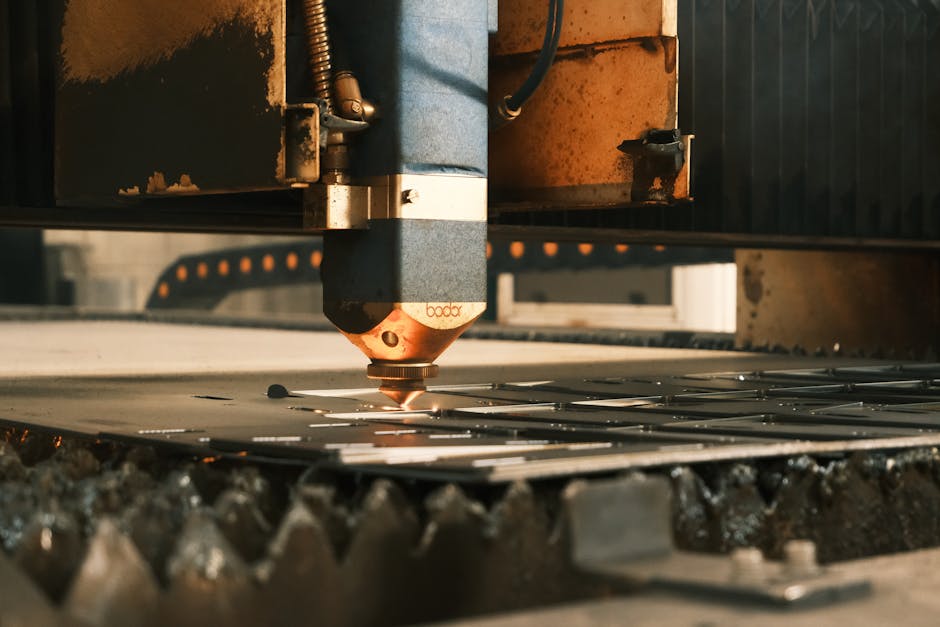Robotic Cranes from Dambach: Innovative Automated Solutions
Robotic cranes have transformed industries by introducing precision, efficiency, and automation to handling tasks. Among the pioneers in this field, Dambach has established itself as a leader in providing innovative automated solutions that address the growing demands of modern warehousing and logistics operations. By integrating advanced technologies into their systems, Dambach is reshaping how facilities operate, ensuring seamless material handling while optimizing space and labor costs.

Their robotic cranes stand as a testament to engineering excellence and practical functionality.
The Technology Behind Dambach's Robotic Cranes
Dambach's robotic cranes are built on a foundation of cutting-edge engineering and intelligent automation. These cranes utilize advanced algorithms to execute precise movements, ensuring that goods are transported efficiently and safely within warehouses or production environments. With their ability to adapt to varying operational needs, they provide an unparalleled level of flexibility.
One of the standout features of Dambach's robotic cranes is their use of energy-efficient motors and regenerative braking systems. These not only reduce energy consumption but also contribute to a sustainable operational model. Their modular designs make them highly customizable, enabling businesses to tailor the cranes to specific applications without compromising on performance.
The integration of sensors and real-time monitoring further enhances their reliability. These features allow for predictive maintenance, reducing downtime significantly by identifying potential issues before they become critical. This proactive approach ensures smooth operations and maximizes equipment lifespan, making them a cost-effective choice for long-term use.
Dambach has also embraced digital transformation by incorporating Internet of Things (IoT) capabilities into their robotic cranes. This allows for seamless connectivity with warehouse management systems (WMS), facilitating real-time data exchange and improving decision-making processes. Such innovations highlight the company’s commitment to staying ahead in an increasingly competitive market.
Applications Across Industries
The versatility of Dambach’s robotic cranes makes them suitable for a wide range of industries. In logistics, These cranes streamline inventory management by automating the storage and retrieval of goods. This minimizes human error and accelerates order fulfillment processes, which is critical in meeting customer demands.
In manufacturing environments, Dambach's solutions are instrumental in maintaining consistent production flows. By efficiently transferring raw materials and finished products between different stages of production, they ensure minimal delays and optimize resource allocation. This capability is especially valuable in high-volume production settings where time is a critical factor.
Cold storage facilities also benefit greatly from these automated systems. Operating in extreme temperatures can be challenging for human workers, but Dambach’s robotic cranes are designed to withstand such conditions while maintaining peak performance. This makes them an ideal choice for industries like food processing or pharmaceuticals that require stringent temperature controls.
Another noteworthy application is in retail distribution centers, where speed and accuracy are paramount. By automating repetitive tasks such as sorting and stacking, Dambach’s cranes free up human workers to focus on more complex roles, thereby enhancing overall productivity.
Benefits for Businesses
Adopting Dambach's robotic crane systems offers numerous advantages for businesses seeking to enhance their operational efficiency. One key benefit is the significant reduction in labor costs. Automation eliminates the need for manual intervention in repetitive tasks, allowing companies to allocate their workforce more strategically.
Space optimization is another major advantage. Traditional storage methods often leave unused areas due to limitations in human accessibility. Robotic cranes can operate in narrow aisles and high racks, maximizing available storage space without compromising accessibility or speed.
- Cost Efficiency: Reduced energy consumption through advanced motor technology.
- Enhanced Safety: Minimization of workplace accidents by limiting manual handling tasks.
- Scalability: Modular designs allow businesses to expand operations seamlessly as demand grows.
The integration capabilities with existing warehouse management systems ensure that businesses can adopt these technologies without overhauling their entire infrastructure. This compatibility reduces transition costs and ensures a smoother implementation process.
Dambach’s Industry Leadership
Dambach has consistently set benchmarks for quality and innovation in the automated crane industry. Their dedication to research and development has resulted in products that not only meet but exceed industry standards. By collaborating with partners across different sectors, they have gained valuable insights into unique operational challenges and tailored their solutions accordingly.
| Feature | Dambach Robotic Cranes |
|---|---|
| Energy Efficiency | Advanced motors with regenerative braking systems |
| Sensors | Real-time monitoring for predictive maintenance |
| Customizability | Modular designs adaptable to various industries |
| IoT Integration | Seamless connectivity with warehouse management systems |
| Sustainability | Reduced carbon footprint through efficient operations |
The company's commitment to sustainability is evident in its emphasis on energy-efficient designs and environmentally friendly practices. By focusing on long-term value rather than short-term gains, Dambach has built a reputation for reliability and trustworthiness among its clients globally.
A Thoughtful Perspective Moving Forward
Dambach’s robotic cranes represent more than just technological advancements; they symbolize a shift toward smarter, more efficient ways of working across various industries. With their ability to handle complex tasks with precision and reliability, these systems are setting new standards for what automation can achieve.
The broader implications extend beyond individual businesses. As more companies adopt such automated solutions, we may witness significant changes in how industries operate, shaping not only business models but also workforce dynamics and environmental impacts. For those interested in exploring this fascinating intersection of technology and industry further, diving deeper into automation trends could provide valuable insights into future opportunities.
Dambach’s innovative approach serves as a reminder that progress isn’t just about creating new tools but about reimagining how we use them to solve problems efficiently and sustainably. It invites us all to consider what the next steps might look like, not just for automated solutions but for collaboration between human ingenuity and machine precision moving forward.
